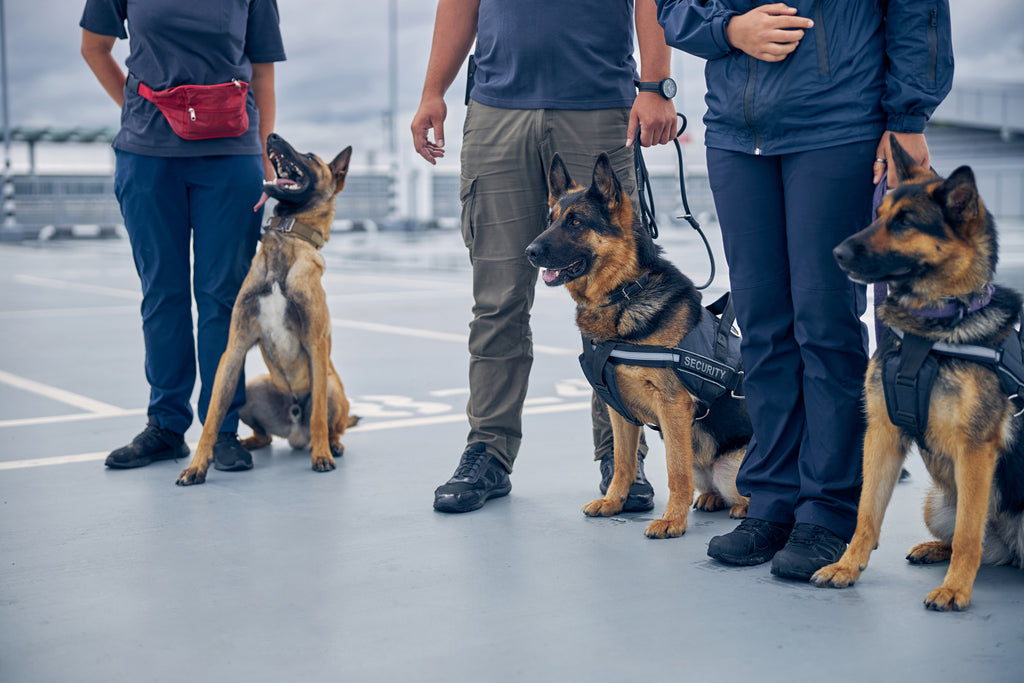Individuals with disabilities can rely on service dogs as remarkable companions, enhancing their independence and quality of life while offering invaluable support. Dedicated, patient, and specialized training go behind every well-trained service dog. Let's explore the meticulous process involved in preparing these canine heroes for life-changing duties.
Types of Dogs Used in Service Dog Training
The selection of the right canine candidate is paramount in service dog training. Dogs with the perfect temperament, intelligence, and physical attributes are carefully considered. Due to their trainable nature, loyalty, and adaptability, Labrador Retrievers, Golden Retrievers, and German Shepherds are among the most commonly chosen breeds for this role.
Known for their friendly disposition and eagerness to please, Labrador Retrievers make excellent service dogs. It is a common trait for Golden Retrievers to provide emotional support, as they possess similar characteristics and a gentle demeanor. Known for their intelligence and versatility, German Shepherds excel at tasks requiring focus and agility, such as guiding visually impaired individuals.
Training Methods
It emphasizes the nurturing of a strong bond between the dog and their handler through positive reinforcement training methods employed in service dog training. As dogs undergo comprehensive training, they learn how to perform a variety of tasks tailored to their future handlers' specific needs through a combination of patience, consistency, and reward-based techniques and tools.

1. Obedience Training:
There are a few fundamental commands that should be learned as a first step to training a service dog. These commands include sit, stay, heel, and come, which will ensure that the dog responds reliably to their handler's cues in various environments.
2. Task-Specific Training:
Depending on the disability for which the service dog will be trained, they can perform a range of specialized tasks. For example, guide dogs undergo extensive training to navigate obstacles, locate curbs, and safely guide individuals with visual impairments. Individuals with mobility limitations can benefit from mobility assistance dogs, which are trained to retrieve objects, open doors, and provide stability for individuals with mobility limitations.
DOG TRAINING COLLARS MYTHS BUSTED
TOP 7 MISTAKES EVERY DOG OWNER MUST AVOID WHEN USING AN E-COLLAR
3. Socialization:
For a service dog to develop into a well-adjusted dog, it is crucial that it is exposed to diverse environments, people and animals. Through socialization, dogs are desensitized to potential distractions and become more confident in various settings, ensuring they stay focused on their tasks even in the face of real-world obstacles.
4. Public Access Training:
In public places, including restaurants, stores, and public transportation, service dogs must behave in a manner that is impeccable. Training in public access places a high priority on acclimating dogs to crowded environments while maintaining their composure and attentiveness to their handler's needs.
New To E Collars? Read INVIROX Training Methodology >>
5. Handler Training:
It is equally important that the handlers who will be partnering with these service dogs receive the same level of training. Through effective communication skills, proper handling skills, and strategies to reinforce desired behaviors, handlers develop a harmonious partnership that is built on mutual respect and trust.
Conclusion
There is something special about the training of service dogs. It takes a great deal of love and dedication to transform ordinary dogs into extraordinary companions capable of changing lives for the better. When each dog is trained to the highest standard, it becomes a beacon of hope and independence for individuals with disabilities. As a result of meticulous training methods rooted in compassion and positivity, these canines embody the unwavering bond between humans and their four-legged companions, enriching the lives of the people around them with every step they take.





